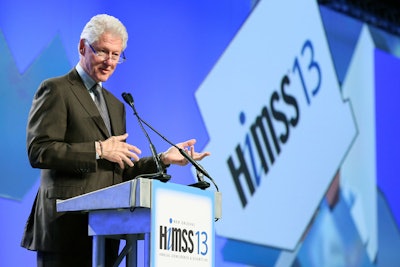
The question for most conference planners is no longer if they should offer an online component but how. How much of the face-to-face program should be shared with the virtual audience? How should it be shared—live, recorded, or both? And how much should online attendees pay for access?
The Healthcare Information Management Systems Society has struggled with these questions as it refines the virtual component of its annual conference and exhibition, which attracts more than 30,000 in-person attendees each year. In 2012, the organization offered a multiday hybrid event with 250 sessions live or on demand, as well as a virtual exhibit hall with real-time interaction, drawing 856 online registrations. Online attendees had to navigate a complex pricing structure, ranging from $295 for qualified members of the organization to $549 for nonmembers who were not qualified, with two additional price points in between.
For 2013, organizers created a new strategy aimed at generating more online participation: less content and a single price of $39. “People’s expectations are that online content should be free, but sometimes that just doesn’t make sense,” said JoAnn Klinedinst, vice president of professional development of H.I.M.S.S. "We find some of our events we don’t charge and we get a very low attendance return on investment. So I think there is an art and a science to making this right. I think we finally figured that out." More than 2,800 people have signed up to access the online content, and about 1,000 of those registrations came from people who also attended the in-person conference, which took place March 3 to 7 in New Orleans. The online programming will remain available until early June, and organizers expect to receive additional registrations.
Online registrants had access to 26 hours of programming, including a live presentation of former President Bill Clinton’s keynote address, four additional keynotes recorded for on-demand access, and 10 one-hour education sessions that were shared live and also recorded. All are still available for viewing, except Clinton’s keynote because of contractual reasons. A virtual concierge actively engaged online participants during the live sessions. “I think the $39 is a really nice fee for the value that has been received. It’s not free, it’s not a giveaway,” Klinedinst said. "Folks are paying for the privilege of attending a hybrid event, and we think it represents a good value. We could charge $10 or $20 more next year, but I’m going to recommend against that. I wouldn’t change a thing."
Organizers also changed how they integrated exhibitors into the online program after hearing complaints that it was too labor-intensive for exhibitors to respond to online attendees in real time while also staffing their physical booths. For 2013, the virtual hall had more of a self-service feel, where visitors could access information or request a time to chat, but booths were not staffed in real time. The virtual exhibit hall also included news-style interviews and stories with exhibitors. For 2014, Klinedinst is hoping to attract more exhibitors to the virtual hall: of the more than 1,100 exhibitors at the in-person conference, only 16 participated online.



















